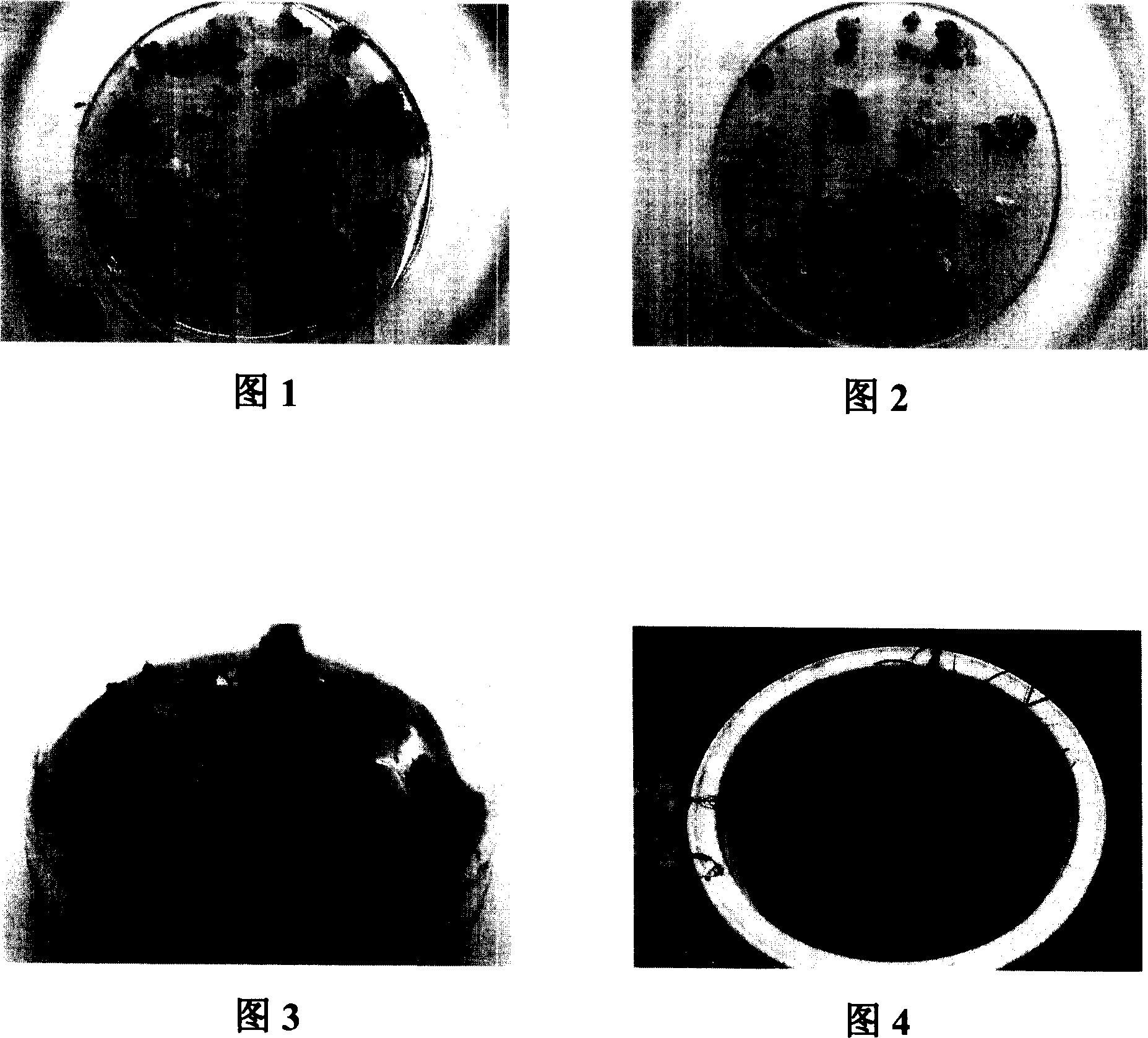Seashore paspalum young spike isolated culture strain-reproducing technique
A technology of in vitro culture and young spikes, which is applied in the field of plant tissue culture, can solve the problems of unsuitable somatic mutant screening gene transformation, loss of ability of green seedling differentiation, etc., to maintain high-frequency plant regeneration ability and increase induction frequency Effect
- Summary
- Abstract
- Description
- Claims
- Application Information
AI Technical Summary
Problems solved by technology
Method used
Image
Examples
Embodiment Construction
[0025] 1. Materials and Methods
[0026] 1.1 Test material
[0027] The sea paspalum variety "Adalay" (Paspalum vaginatum Sw.cv.Adalay) introduced from the United States was provided by Shenzhen Mission Hills Golf Course as the test material.
[0028] 1.2 Medium
[0029] The basal medium consists of MS macroelements, MS trace elements (Murashige T, Skoog F.Arevised medium from rapid growth and bioassays with tobacco tissuecultures[J].Physiol plant, 1962,15:473~497) and B5 vitamins (GamborgOL, Miller R A, Ojima K. Nutrient requirements of suspension cultures of soybean root cells [J]. Exp. Cell Res., 1968.50: 151-158), a commonly used medium in plant tissue culture, sucrose 30g / L;
[0030] Callus induction medium and callus subculture medium additional hormone: 2,4-dichlorophenoxyacetic acid (abbreviated as 2,4-D, Shanghai Chemical Reagent No. 4 Factory) 2.0mg / L, 6-benzylamino Purine (referred to as BAP, Shanghai Xueman Biotechnology Co., Ltd.) 0.05mg / L;
[0031] Callus dif...
PUM
 Login to View More
Login to View More Abstract
Description
Claims
Application Information
 Login to View More
Login to View More - R&D Engineer
- R&D Manager
- IP Professional
- Industry Leading Data Capabilities
- Powerful AI technology
- Patent DNA Extraction
Browse by: Latest US Patents, China's latest patents, Technical Efficacy Thesaurus, Application Domain, Technology Topic, Popular Technical Reports.
© 2024 PatSnap. All rights reserved.Legal|Privacy policy|Modern Slavery Act Transparency Statement|Sitemap|About US| Contact US: help@patsnap.com








